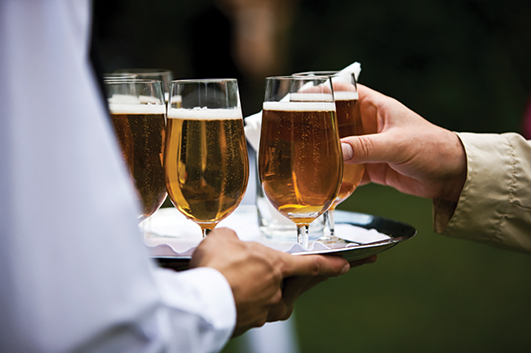
By Len Panaggio, Beverage Consultant
As we move into the summer, hopefully our orders are reflecting a seasonal increase in business! More business in your establishment means more product is being delivered. Remember, we serve perishable products at the bar: beer, wine, juices, fruit, soda — yes soda — and, even spirits. What I want to focus on today is beer and wine.
Are you versed in reading the date codes imprinted on most beers made in America? With few exceptions, beer is good for just 150 days. With all of the additional inventory coming through the doors, you need to make sure you have a system in place to avoid selling old product to your guests. There is nothing worse than a customer having a beer he or she has never had, tasting it, and because it is old, having a bad experience. That consumer will probably never try that beer again!
Many bartenders and bar backs load their coolers without rotating their stock, bringing those beers from the bottom to the top. Do you have a program in place to address this potential problem?
A good remedy is to rotate all of the bins on the first of the month; this is an easy way to ensure that the bottom of the barrel, no pun intended, is not ultimately winding up in a guest’s hand. Same idea in your walk-ins: make sure you’re not stacking new product on top of old. First in, first out should be your rule. Yes, it takes time, but it is well worth it.
Some brewers will take back old product because they don’t want it getting out to the end-users, your guests. It is always worth asking. Draught beers have the same issues so make sure your managers stay on top of the date codes. They are there for a reason, not as a guideline. Also, make sure your lines are cleaned regularly as mandated by law in Rhode Island. There is a wealth of information available on beer freshness at BeerDates.com.
Now, on to the grape! Wine has the same issues as beer and you need to make sure that your bar is being restocked using the rotation system. I realize that when you open a bottle of wine to pour by-the-glass, the hope is that the bottle will be empty by days end, but, that’s not always the case.
How are you addressing open bottles, and do you have a wine preservation system in place? Are you dating the bottles when opened and do you taste them for freshness before serving your guests? I know it’s a lot to consider, but guests will definitely remember if they’ve had a bad glass of wine because your establishment didn’t take necessary steps to make sure the product being served is fresh.
Also important is the storage location. Once opened, where do your wines end up? Whites usually end up in a cooler, which is good, but what about the reds? Heat is an enemy of wine and beer, so make sure you store your reds in a cool place, not next to compressors.
In the long run, staying vigilant will ensure that your product is fresh and that your guests are having the experience that they deserve, and are paying for. Here’s to a great summer, we earned it! Prost!
Len Panaggio’s career in food and wine spans more than three decades as an owner and as a beverage director at some of the top restaurants in Rhode Island. Currently a hospitality consultant, Len is a graduate of the University of Rhode Island and has attended the Culinary Institute of America Master Sommelier program and the Sterling School of Service and Hospitality.




